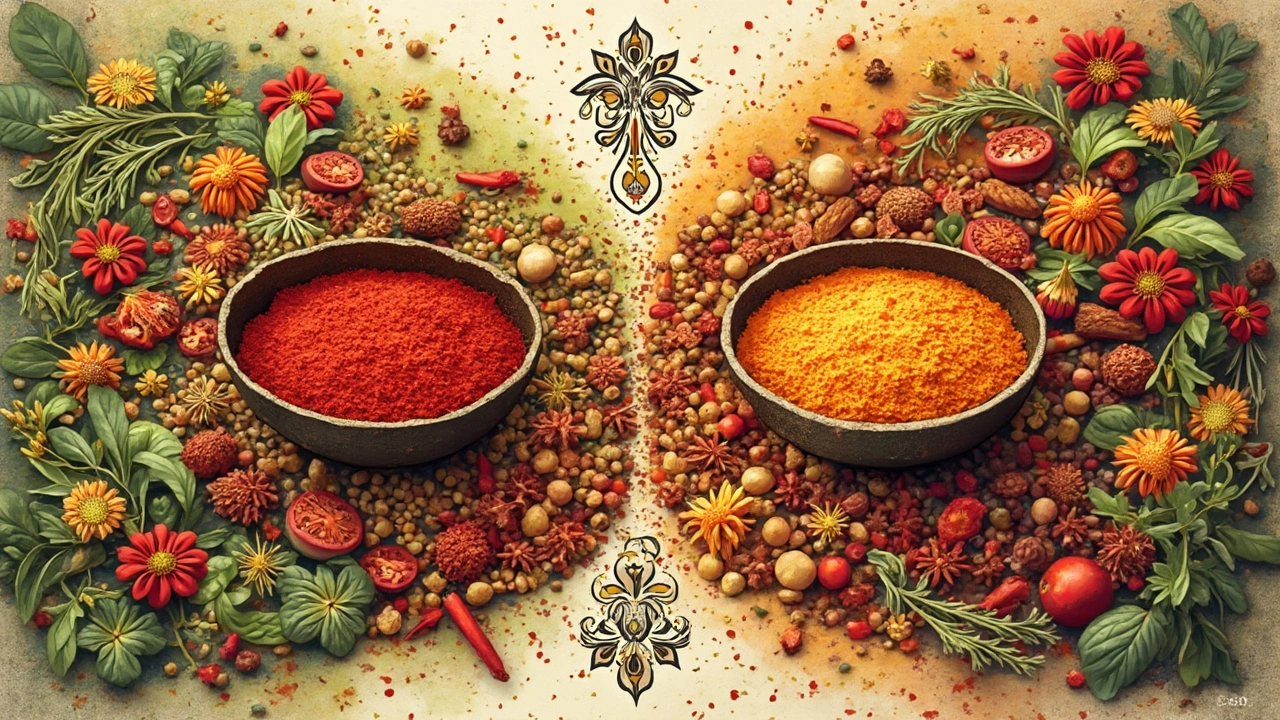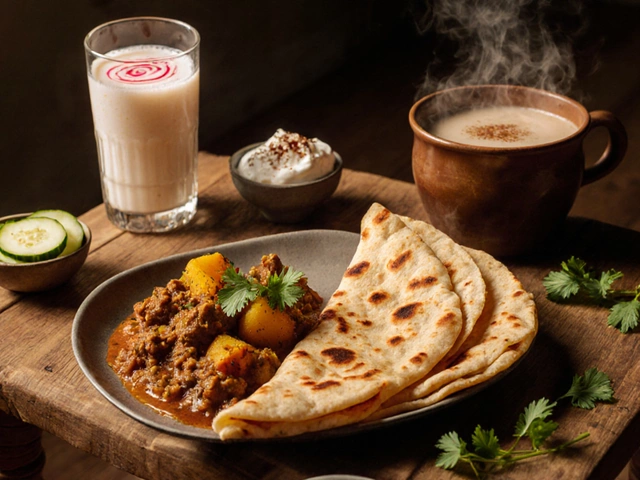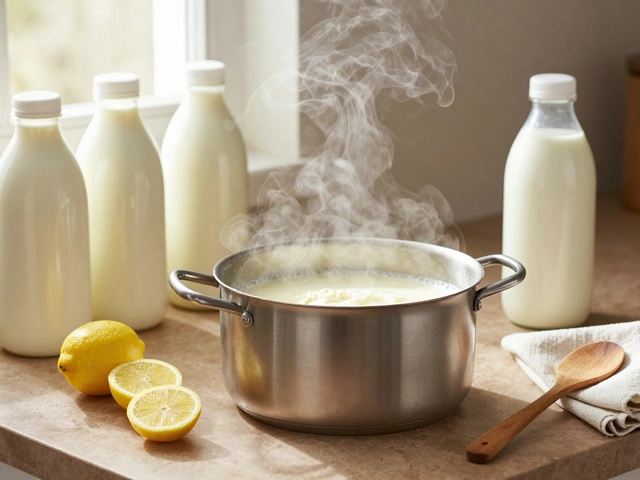Ever wondered why your favorite Indian dishes taste so uniquely different even though they share a common spice heritage? Enter tikka and tandoori seasonings, the secret weapons in any spice lover's kitchen. Let's unravel the mystery behind these two flavorful blends and see how each can transform your culinary adventures.
Tikka seasoning is like a warm, aromatic hug. It's the go-to mix for marinating chicken, beef, or even vegetables before grilling them to perfection. The mix often includes spices like cumin, coriander, paprika, and a touch of chili—all working together to create a bold yet balanced taste.
- Understanding Tikka Spice Mix
- The Essence of Tandoori Seasoning
- How They're Used in Cooking
- Tips for Making Your Own Blends
- Pairing These Flavors with Dishes
Understanding Tikka Spice Mix
When someone says tikka seasoning, they're talking about a specific blend of spices that delivers a knockout flavor punch. It's this distinct mix that gives your grilled chicken or paneer that iconic, mouth-watering taste. But what exactly makes it tick?
At its heart, tikka seasoning is a mix of spices like cumin, coriander, and paprika. These are foundational spices in Indian cuisine, each bringing something unique to the table. Cumin adds warmth, while coriander gives a fresh, citrusy pop. Paprika, on the other hand, lends a smoky sweetness, which is a signature twist for any tandoori-style dish.
But there's often more to it! Many tikka mixes also include ginger and garlic powders, which not only add depth but also help tenderize meats. Adding a dash of chili powder brings that extra kick, ensuring your dish has the right amount of heat without being overpowering.
The beauty of tikka seasoning lies in its versatility. While it's a superstar for meat dishes, don't shy away from using it with veggies or even tofu. Looking to make it yourself? It's pretty simple. Mix equal parts of the core spices, and tweak the heat with more or less chili powder to suit your taste.
If you ever get a chance to peek into an Indian kitchen, you might be surprised at the family recipes floating around. It's not unusual to come across special family blends, where a secret ingredient or two is added for that personal touch. This naturally keeps the world of tikka seasoning exciting and endlessly varied.
The Essence of Tandoori Seasoning
Tandoori seasoning is the heart of many Indian dishes - the kind that makes your taste buds dance. It's not just a simple spice mix; it's a blend that tells a story of tradition and flavor. At the core, tandoori seasoning usually revolves around ingredients like cayenne, garlic, ginger, and turmeric. These are mixed with yogurt when marinating meat to ensure the flavors soak in beautifully.
What's unique about this seasoning is its vibrant red color, often achieved through ingredients like paprika or annatto seeds. This gives the dishes a distinctive look that matches perfectly with its bold taste. You'd expect a tandoori-flavored dish to be cooked in a tandoor, a clay oven that gives the food its characteristic smoky flavor, but don't worry—your regular oven or grill works too!
Here’s a fun fact: The inclusion of yogurt in the marinade isn't just for taste; it also acts as a tenderizer, helping break down proteins in meats, making them juicy and flavorful. Imagine tandoori chicken sizzling away—it's a sensory explosion, and not one you'll forget easily. Plus, you can apply this seasoning beyond meat, adding it to paneer or even roasted vegetables for a vegetarian delight.
Want to make your own tandoori seasoning at home? It’s quite straightforward, and you can adjust it to match your flavor preferences. Here's a basic idea of what you might need:
- 2 tablespoons ground coriander
- 2 tablespoons ground cumin
- 2 tablespoons ground turmeric
- 2 tablespoons ground cayenne pepper
- 2 tablespoons smoked paprika
- 1 tablespoon ground ginger
- 1 tablespoon ground garlic
Mix them up, store in a jar, and you're ready to give your dishes that authentic punch of flavor anytime. Making your seasoning ensures you know exactly what's going into your food—a bonus if you're keen on keeping things healthy and natural.

How They're Used in Cooking
When we think of Indian cooking, tikka and tandoori seasonings are the stars of the show, especially for marinating and grilling. But each brings something unique to the table. Tikka seasoning, with its milder and often creamier profile, is usually seen adding life to grilled dishes like chicken tikka, where chunks of meat get slathered in a yogurt marinade embedded with the spice mix. It's all about soaking in that flavor bomb before hitting the grill.
Tandoori seasoning, on the flip side, is a bit more intense. This blend is built for higher heat, typically in a traditional clay oven, or tandoor, hence the name. It's not just about the flavor but also the iconic red hue that comes from spices like cayenne and occasionally food coloring. The tandoori marination is usually thicker and more robust, perfect for pieces of meat that can stand up to that intensity, like chicken tandoori or even boldly spiced prawns.
Using these in the kitchen isn't complicated. Here's a quick checklist:
- Tikka seasoning: Mix it with yogurt and lemon juice for a quick marinate. Cover your preferred protein or veggies and let them sit for at least an hour.
- Tandoori seasoning: Go a step further by adding a dash of oil or ghee to the seasoning mix. This helps in achieving a crispy exterior when oven-cooked or grilled over high heat.
And don't just stop at meats! Try tikka-seasoning over a veggie stir-fry or sprinkle some tandoori magic on your roasted potatoes. The options are only limited by your imagination.
Tips for Making Your Own Blends
Ready to take your cooking game up a notch by crafting your own tikka and tandoori seasonings? It's easier than you might think, and having fresh mixes can really elevate your dishes. Here's how you can get started making these signature blends right at home.
The big secret to a great homemade mix is using fresh, high-quality spices. Before jumping in, make sure your pantry is stocked with essentials like cumin, coriander, turmeric, cayenne pepper, and ginger. Trust me—they make all the difference.
- Tikka Blend: Start with an equal mix of ground cumin and coriander. Add a smaller amount of paprika for color, a pinch of cayenne for heat, and finish with salt and turmeric for that golden glow. Blend to your taste and adjust the heat by varying the amount of cayenne.
- Tandoori Mix: This blend favors a heavier punch of spices. Begin with twice the amount of cumin and coriander compared to the tikka blend. Toss in some garam masala, ginger powder, and a hint of fenugreek for a more complex aroma. Smoked paprika adds depth, and don't forget a shake of chili powder!
Mix all ingredients well and store these blends in airtight jars. They'll keep their punch for up to six months if kept in a cool, dark spot. If you're feeling adventurous, you might even tweak these recipes. Add a dash of cinnamon to your tandoori mix for sweetness or some black salt to your tikka for a robust twist.
And here's something cool: When using these seasonings, consider the fat content of your marinade. A yogurt-based marinade works wonders with tandoori seasoning, helping the flavors soak in nicely. While tikka goes wonderfully with cream or a lemon juice marinade, enhancing its tangy side.

Pairing These Flavors with Dishes
So you've got your tikka and tandoori spices ready, but now what? The magic lies in knowing which dishes can really shine with these spices. Let's talk about how to match them with meals that'll leave everyone wanting seconds.
Tikka seasoning is incredibly versatile. Obviously, it's famous for the classic Chicken Tikka, where chicken chunks soak up the spices before they're grilled. But don't stop there. Tikka's great for adding some pizzazz to roasted veggies like cauliflower or potatoes. And if you're feeling adventurous, try it on paneer or tofu for a vegetarian delight.
On the flip side, tandoori spices bring a smoky, charred flavor—thanks to the traditional clay oven used for cooking. Besides the much-loved Tandoori Chicken, these spices are fantastic with fish, especially varieties with a firm texture like salmon or cod. And you can't go wrong by sprinkling tandoori seasoning over lamb chops before grilling them.
Why not experiment with these spices in non-traditional ways? Just a dash of tikka in your scrambled eggs might change your breakfast game. Or introduce tandoori spices into your burger patties for an unforgettable twist.
Here's a quick guide to get your creative juices flowing:
- Tikka: Works best with chicken, veggies, paneer, and tofu.
- Tandoori: Perfect for chicken, fish, lamb, and burgers.
Remember, there's no one-size-fits-all. Taste as you go and adjust to what feels right for your dishes. And most importantly, have fun experimenting!
- Poplular Tags
- tikka
- tandoori
- seasoning differences
- Indian spices











